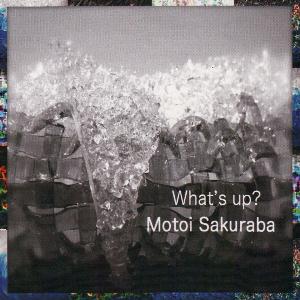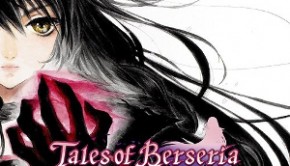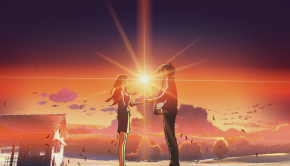What’s Up?
 |
Album Title: What’s Up? |
| Record Label: Musea Records (EU Edition); diskunion (JP Edition) |
|
| Catalog No.: FGBG-4919; DUJP-011 |
|
| Release Date: February 4, 2013; April 10, 2013 |
|
| Purchase: Buy at Official Site |
Overview
What’s Up? is the full release of the third solo album by Motoi Sakuraba. While Gikyokuonsou focused on progressive rock and Forest of Glass focused on piano solos, this album is a mixture of the two, although it is more heavily focused on the former. The previous release, After All… featured ten tracks, with the full release adding an additional four. How does Motoi Sakuraba’s third album compare to the previous ones?
Body
The album opens with “Sorrow,” a very somber, melancholy piece with a very touching melody. It is, however, short, as are the other piano pieces and mainly serves as a way to open up the album. The interlude piece, “Not here,” has a very sad, almost abandoned atmosphere, yet there is an air of bittersweet romance heard in the piece. Of the three piano pieces, this one is probably my favorite and is definitely the most emotionally engaging. The last piece, “Suffering mind,” is also very desolate in sound and due to being the longest piano track on the album, it’s definitely the most developed. There’s a wonderful elegance to the piece, but at the same time, feelings of torment are present, particularly in the more chaotic and darker sections of the piano piece.
The majority of the album, though, features progressive rock in a variety of ways, some more similar to his tri-Ace works and some more reminiscent of his first solo album, which, in ways, makes for a varied progressive rock soundscape, but at the same time, some come off slightly uninspired, even if they are enjoyable. The first progressive rock piece on the album is “Megrim,” a track that has a sound that is a fusion of his first solo album and some of his RPG work. It features some fantastic keyboard sections, an intense rhythm, and I love the mix of classic Sakuraba keyboard work mixed with the spacey synthesizers. It creates a very engaging dynamic and throughout the piece, there will be times of more epic, choral inspired moments, and more frenetic solo. The bass guitar work is also quite slick and compliments the drum work and synthesizer quite well, providing a nice rhythmic aspect to focus on throughout the keyboard work.
One of my favorite pieces on the album is “Stand still.” This one is definitely conjures up images of Gikyokuonsou, but done in a more modern style where some of the piano is a bit jazzy, reminiscent of Sakuraba’s more recent focuses. I really love the piano focus of this piece as it offers a very romantic atmosphere and I think it really works well with the amazing bass guitar work and drums. Of course, there are some more synthesizer inspired sections that work well, and the slower paced sections offer a calming, serene, atmosphere. This is truly one of Sakuraba’s best progressive rock pieces in years. The title theme, “After all…,” is another theme that has a very Gikyokuonsou sound. As with “Stand still” there is a focus on piano that really contrasts nicely with the synthesizer focused sections of the track. One of my favorite sections of the entire piece is when the tempo is slowed and the piano flows quite poignantly. There are also some spookier sections, although short, that combine the keyboard and piano work in a nice way. Fans of Gikyokuonsou will probably enjoy this piece quite a bit.
“Shade inside groping” is most reminiscent of the darker themes from Star Ocean: The Last Hope, although done with a more synthesized focus, similar to some of the earlier dungeon themes in the game. Of all the tracks, I find this one to be the least successful, as it comes off sounding a bit uninspired, but it does have its merits. There is a tremendous amount of atmosphere and I really like how the tone of this piece really contrasts with much of the album. The synthesized choral notes and the keyboard passages work wonderfully together as does the slow tempo of the drums and bass guitar work. In the end, though, it is definitely worth a listen. From the onset, “Lie” definitely hypnotizes you with its funky bass guitar riffs before leading into some more tri-Ace sounding keyboard work. The melody has a very futuristic, spacey sound to it, at times heroic, at others, contemplative, and the bass guitar work and drums really help reinforce the melody. There are also some funkier passages that sound like they’d work well in End of Eternity. As with “Shade inside groping,” it is one of the lesser inspired pieces on the album, but the interesting bass guitar work does help add something new to the mix.
“Try again” is another piece that bears a bit of fusion between his solo and RPG works. I really like the rising chord progressions that help build up the epic nature of the piece and how it moves immediately from those types of passages to more keyboard heavy sections and heroic futuristic soundscapes. As always, the way Sakuraba manipulates the keyboard during his solos is awe inspiring and it really manages to bring the piece to a new level. The more intimate and darker moments of the piece are few and far between, but really manage to bring a different musical texture to the forefront. “The way,” although not the most inspired piece on the album, is definitely the most entertaining, especially for fans of Sakuraba’s battle themes for the tri-Ace developed games. It opens up with a very heroic, spacey soundscape that definitely conjures up images of Star Ocean: Till the End of Time. It’s a slow tempo section, featuring synthesized chorus, brooding drum work, before building up into a tempo more akin to a battle theme. From there, it’s Sakuraba doing what he does best. The keyboard work and various synths are absolutely stunning and he manages to use them in a variety of ways to draw some clear musical contrasts in terms of texture. As with every theme, there are a variety of solos that really shine and add some nice improvisation to the mix.
In addition to the tracks listed above, which were also featured on After All…, there are four additional pieces featured on this release. “Illusion of Darkness” is definitely the darkest of the bunch, focusing on eerie, free-form piano and percussion with a slight jazzy influence. Of all the music on the album, I feel this is definitely the weakest, although it is nice to see a break from the progressive rock heavy album with something a bit more experimental. The rest of the new tracks are an interesting blend of sounds that definitely feel like his Gikyokuonsou work mixed with his more modern orchestral and progressive sounds. “Step On” has a sinister atmosphere for a majority of the piece and the various synthesizers, orchestral tones, and piano work together to create an enjoyable piece. Towards the end of this piece, it definitely adds some more orchestral elements, although short-lived, that give it a bit more of a stronger atmosphere.
“Change of Mind” opens up with beautiful piano and bass guitar work before diving headfirst into some frenetic orchestra and keyboard work. There are definitely some passages that seem lifted straight from Star Ocean: The Last Hope, but despite this, it still manages to create some beautiful melodic passages with some beautiful solos. While this track has a great energy, it is definitely the softer, more melodic sections that win me over, especially with the piano. The album closes with “Therefore,” which definitely conjures up images of “Doorway to Heaven.” The album opens up with some beautiful piano work before moving into a march-like progressive rock soundscape akin to the tracks that typically feature near the end of his live performance releases of his Star Ocean and Valkyrie Profile music. The piece itself is probably my favorite on the album though, as the keyboard work is quite impressive and the addition of the choir really adds a nice element to the finished product. What I think I like the most about this piece though is the classically inspired piano solo followed by a mini-piano jam session giving the piece a bit more of a darker and more abstract feel.
Summary
Although not quite as successful as his previous two solo albums, What’s Up? is a wonderful fusion of ideas from his previous two solo albums as well as some of his Star Ocean based work. There are a variety of different atmospheres, ranging from melancholy to upbeat, and the flow of the album is quite nice, as each progressive rock piece offers a different overall tone. For fans of Sakuraba’s progressive rock, this should definitely be sought out, but some of the pieces do come off a bit uninspired, but nonetheless enjoyable.
Do you agree with the review and score? Let us know in the comments below!
4
Posted on June 28, 2015 by Don Kotowski. Last modified on June 28, 2015.














